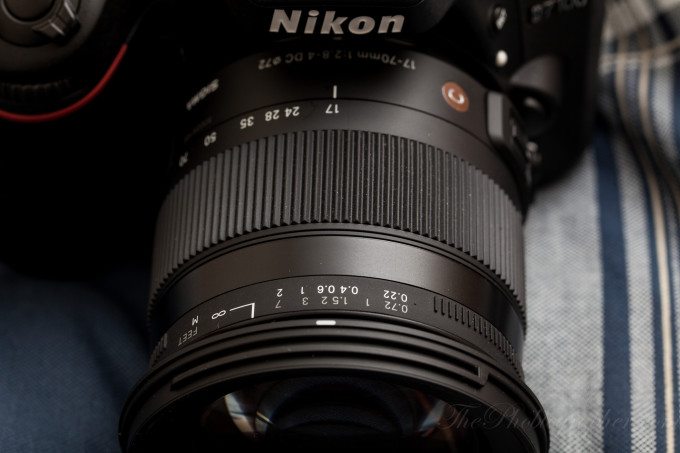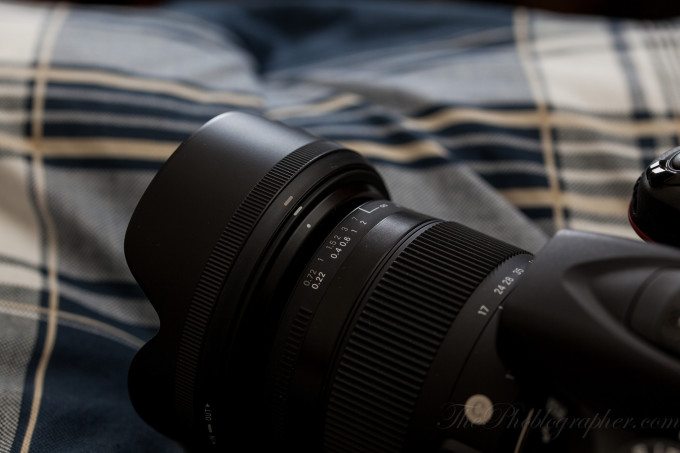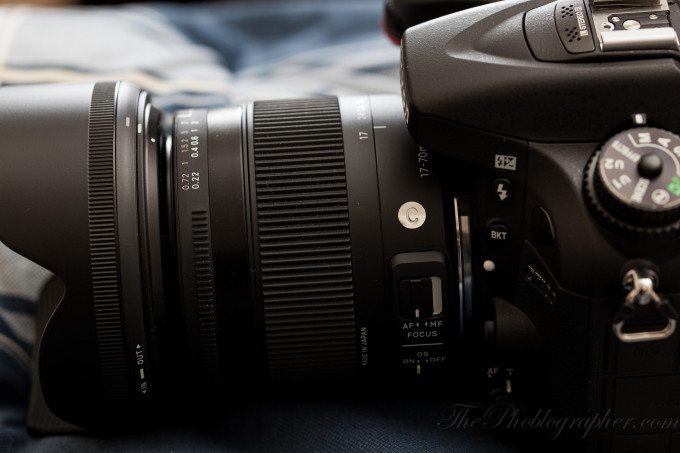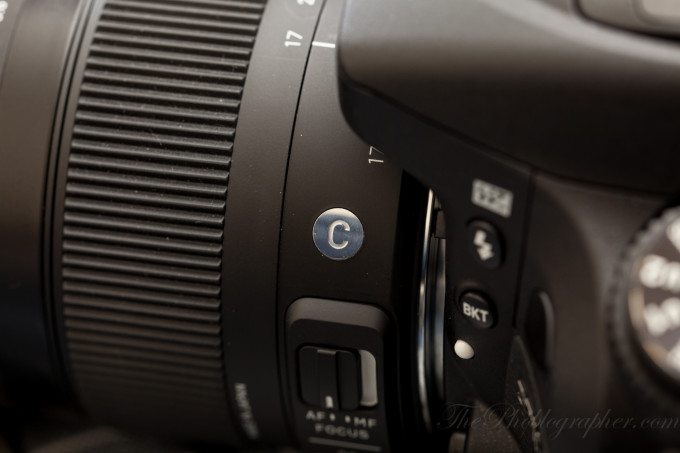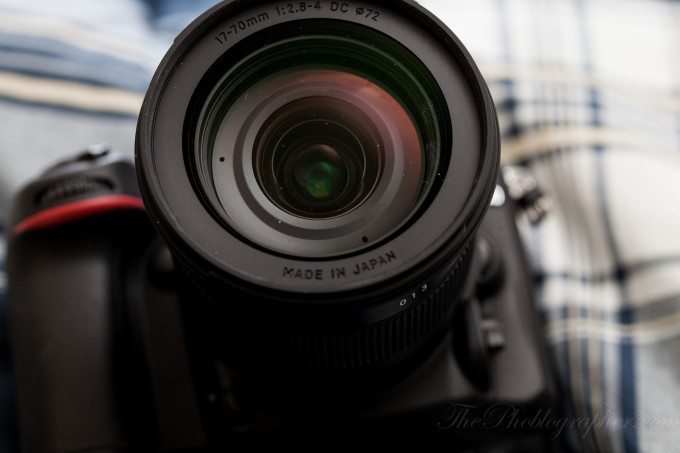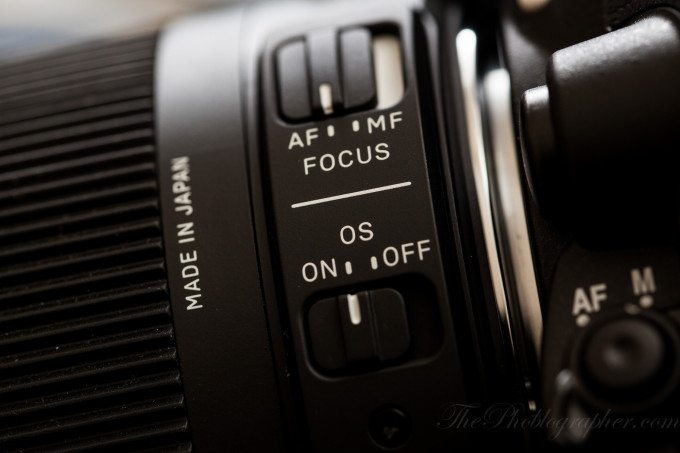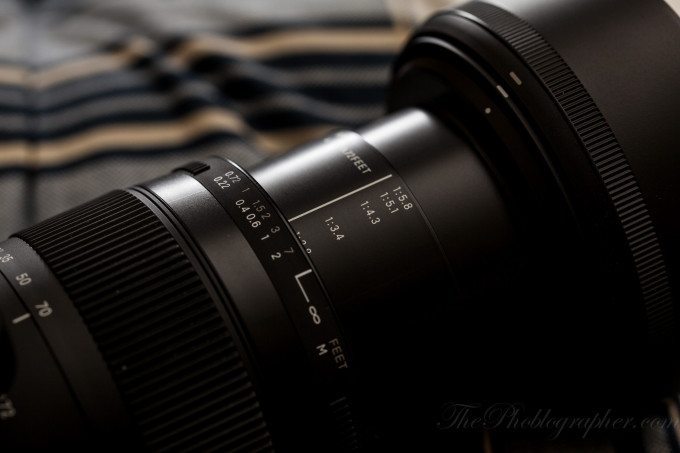Last Updated on 04/21/2013 by Chris Gampat
Sigma’s first entry into their contemporary series is their new 17-70mm f2.8-4 DC Macro OS HSM. The contemporary series is part of the company’s rebranding and a revamp in their quality control measures. Since it is a contemporary lens, it is also targeted at the APS-C sensor DSLR user. The focal length range also greatly appeals to the hobbyist along with the fast f2.8 aperture at the wider end. Add in Optical Stabilization and the brand new exterior and you’ve got yourself an aggressive repositioning in the market.
We tested the lens with the Nikon D7100 over a period of time. Traditionally, the site’s staff have been fans of the company’s primes–but not so much with the zooms. So is the new Sigma lens an award winner, or is it just some more fishy business?
Pros and Cons
Pros
– Sigma has truly shown their commitment to revamped and improved image quality
– Very quiet optical stabilization
– Beautiful exterior is almost Art Lens-like
– Quiet and fast focusing
– No issues focusing with Nikon’s latest DSLRs at all
– Nice small size
Cons
– Manual focusing ring is a bit awkward
Gear Used
We tested the Sigma 17-70mm f2.8-4 DC OS HSM with the Nikon D7100, SB-600 flash, PocketWizard Plus III triggers, and Paul C Buff Einstein E640 monolight.
Tech Specs
Technical specifications taken from the B&H Photo Video Pro Audio listing.
| Features | |
|---|---|
| Image Stabilization | Yes |
| Autofocus | Yes |
| Tripod Collar | No |
| Physical | |
|---|---|
| Filter Thread | 72 mm |
| Dimensions (DxL) | Approx. 3.1 x 3.5″ (7.87 x 8.89 cm) |
| Weight | 1.18 lb (535 g) |
Ergonomics
Sigma’s new 17-70mm f2.8-4 DC HSM OS may be mistaken for an art lens at first due to the super slick black exterior. But it is indeed a contemporary lens. Though it feels like an art lens as well, users will understand that due to the aperture range, it surely isn’t meant for “Art” per se.
The lens is characterized by a couple of controls: two rings (one for zoom, one for focusing), two switches (one for focusing and the other for optical stabilization) and that’s really about it. The entire package is really small for what the lens is also capable of–and when you hold it you may even think that you’re holding something about the size of a small apple that was picked too early.
See that “C” up above? That’s what designates this lens as a contemporary optic–partially. It’s a subtle touch that can easily go unnoticed, but it’s there.
The front element of the lens doesn’t move in and out when focusing–but you’ll see the elements inside of it shifting around when focusing happens. There is also enough distance away from the edges to mount a Vari-ND filter and not cause vignetting when shooting video or some other application that requires the use of them.
On the side of the lens are the AF/MF switch and the OS On/Off switch below that. In real life use, your thumb will slide back and forth with ease when trying to access these controls.
And when you zoom in and out on the lens, you’ll see another focusing scale come up which will help with macro focusing. In real life use, we never used it–and we’re not sure how many people will actually do so.
Build Quality
We can’t complain much about the build quality of this lens. It is small, light, but fairly solid feeling. We like the placement of the switches and the zoom ring is also very nicely designed. Our only real quibble is the manual focusing ring–and sometimes we needed to use it.
Most users of this lens won’t have much of a complaint about the lens at all.
Autofocus
Slick, speedy, and silent–these words can be used to describe the focusing of this lens. To be very honest, this is probably the fastest focusing Sigma lens that we’ve seen to date. Part of this can be due to the very light glass elements, but the company should be praised for doing a self-audit to go from slow as molasses to fast enough to capture your kid running around after he’s had too much candy.
Part of this speed though has to do with the camera body that you’re using–so keep that in mind as you try to catch up to the little rascal.
Image Quality
We were generally quite impressed with the quality that the Sigma 17-70mm f2.8-4 could produce. In previous years we were extremely wary to recommend Sigma’s zoom lenses. However, this is a zoom lens and it isn’t even targeted at the higher end audience. The image quality from this lens when mounted to the Nikon D7100 is exceptionally good–and it is overall highly recommended in terms of image quality.
Bokeh
In order to get any of the maximum effects of bokeh with this lens, you’ll need to shoot close or wide open at the given aperture. 17mm is a very wide angle to begin with.
Given the focal length, however, the bokeh of this lens is still extremely creamy. If you’re a Micro Four Thirds user, you’re probably used to seeing bokeh like this. When judging this factor, though, we need to keep one major factor in mind: the person to whom this lens is targeted. This lens isn’t a professional grade optic by any chance, but it is for the average Joe that wants something a bit better but not at the super high end level.
This consumer will be happy with the bokeh from this lens when shot wide open. The bokeh halls are very round–if you manage to see any at all that is. In fact, the bokeh looks similar to that of a medium format lens stopped down a bunch. And that statement makes total sense because of the fact that this is a wide focal length (or starts that way) and is also designed to be mounted onto an APS-C sized sensor. Because of the smaller dimensions, it also won’t render bokeh as gorgeously. In fact, if you put it into a full frame perspective, wide open at f2.8 will be the equivalent of f5 in full frame regards.
Now add that into the fact that you have 17 x 1.5 which = 25.5 and you’ve got not only a wide angle that is supposed to give you some bokeh, but also a relatively slow aperture.
This lens though is also being billed as being a macro optic–and although it doesn’t go to the full 1:1 macro ratio, it does focus quite closely–and you’ll need that if you want to see any of the effects of the bokeh.
Sharpness
The sharpness of this lens peaks off at f8–meaning that beyond this we really don’t recommend using it. We had to shoot the giant pillow fight in NYC at this aperture and noticed that the sharpness really maintained high levels.
However, this could also be due to the fact that we paired it with the Nikon D7100–which has no low pass filter and therefore also will render sharper images.
Once again, for the person that this lens is targeted towards, they’ll find no complaints with the quality.
Color Fringing
And here’s the even more disturbing and amazing part–despite the fact that this lens isn’t targeted at the higher end audience, we couldn’t find any color fringing at all. Nope. No green or purple fringing anywhere in the photos.
Crazy, huh?
Distortion
We knew this lens couldn’t be too goo to be true!! And indeed it isn’t. We found distortion at all the focal lengths wider than 50mm. Once passed there, distortion was kept under control very well.
Unfortunately, there currently is no lens profile in Adobe Lightroom, so you’ll need to do any distortion correction manually. Still, that’s not such a big deal.
Extra Image Samples
Conclusions
When I received this lens in for review, I had quite a number of dispositions. First off, I personally hate zoom lenses and think that their quality is far inferior to primes. While I still believe that, I was humbled by this lens. Not only was the quality good, but it is from a third party that has traditionally been known to not have their act together when it comes to quality control.
Granted, this has been long gone now with the company’s rebranding and new strategies, but we didn’t think it would apply this much to their new lenses not meant for the professional. There isn’t much bad to say about the Sigma 17-70mm f2.8-4 DG OC HSM. It’s a wonderful lens and if I didn’t own all full frame DSLRs, I’d even consider purchasing it.
The ergonomics of the lens are just as sweet as their art lenses and the quality is right up there to match. Indeed, Sigma’s quality is really, really astounding at this point and we’re floored by what they can do now.
We highly recommend the new 17-70mm f2.8-4 DG OS HSM.
Please Support The Phoblographer
We love to bring you guys the latest and greatest news and gear related stuff. However, we can’t keep doing that unless we have your continued support. If you would like to purchase any of the items mentioned, please do so by clicking our links first and then purchasing the items as we then get a small portion of the sale to help run the website.


